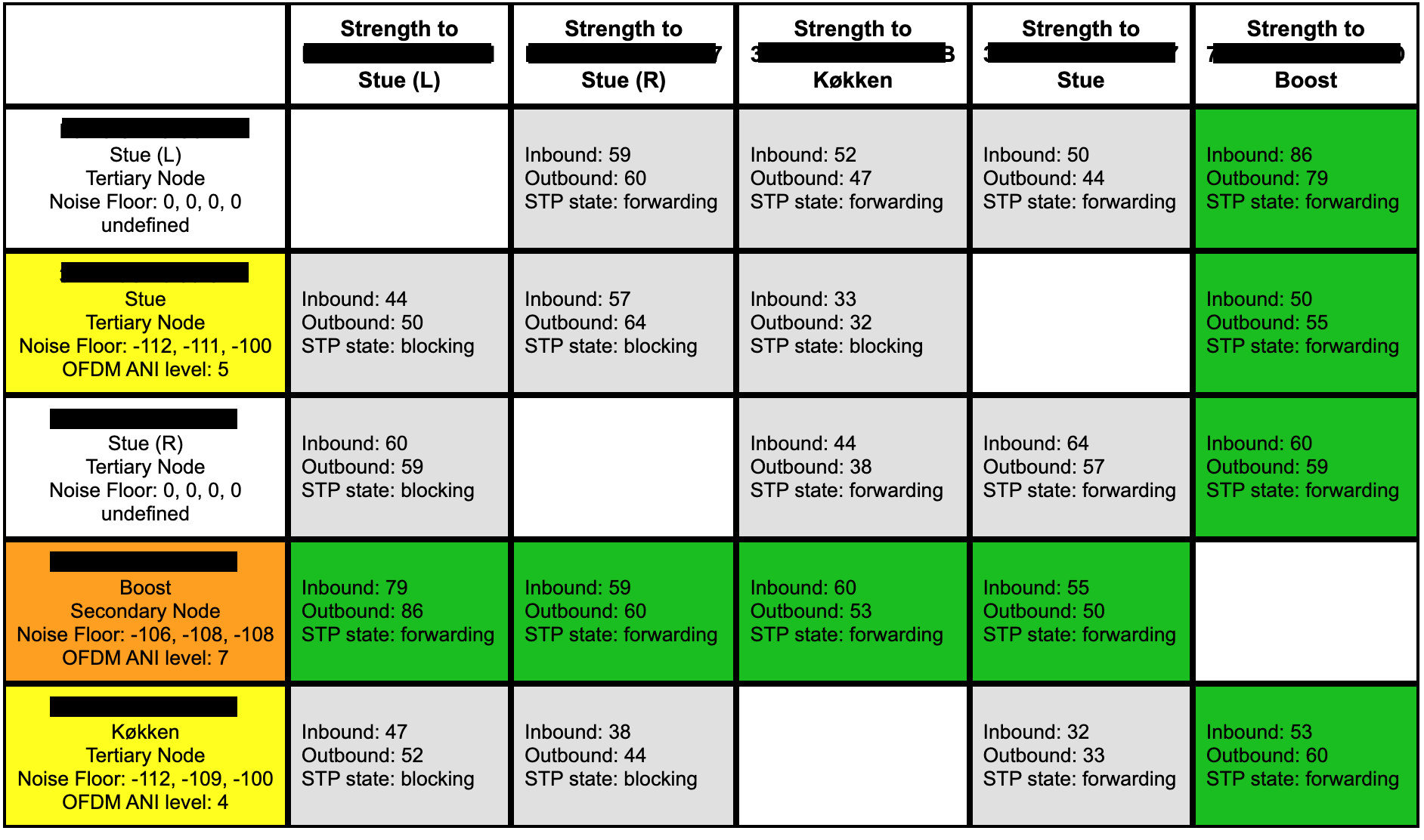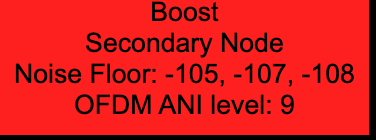Hi all,
I have two Sonos One SL and two IKEA Symphony bookshelf speakers running in my current, limited setup. Recently, I began experiencing problems with sound falling off some speakers for a few seconds, then coming back - and then falling off again randomly.
As I expected that this was due to distance / walls etc. giving the network a hard time, I went out and purchased a Boost. This is now connected with a cable to my main access point (that is again cabled to my main router in the attic).
I tried the tools available for troubleshooting - e.g. the network matrix at something like this address: http://192.168.0.207:1400/support/review
From my Boost, connections to all speakers is green - which I presume means that the Sonos network-coverage and communication is fine.
However, many times during the day, speakers will still be falling off. Sometimes one of the Symfonisk will play, while the Ones are still - then they come back randomly, and then one of the Symfonisk speakers fall out, to return again a bit later.
It’s incredibly frustrating and renders the system virtually useless! Also, I don’t assume that this is due to a bad internet connection, as Spotify keeps playing - just only on some of the speakers.
I tried changing network channels many times, but it doesn’t seem to make any difference.
Does anyone have an idea of what can be done for more stability?
Thanks in advance,
/Bo
Best answer by AjTrek1
View original


